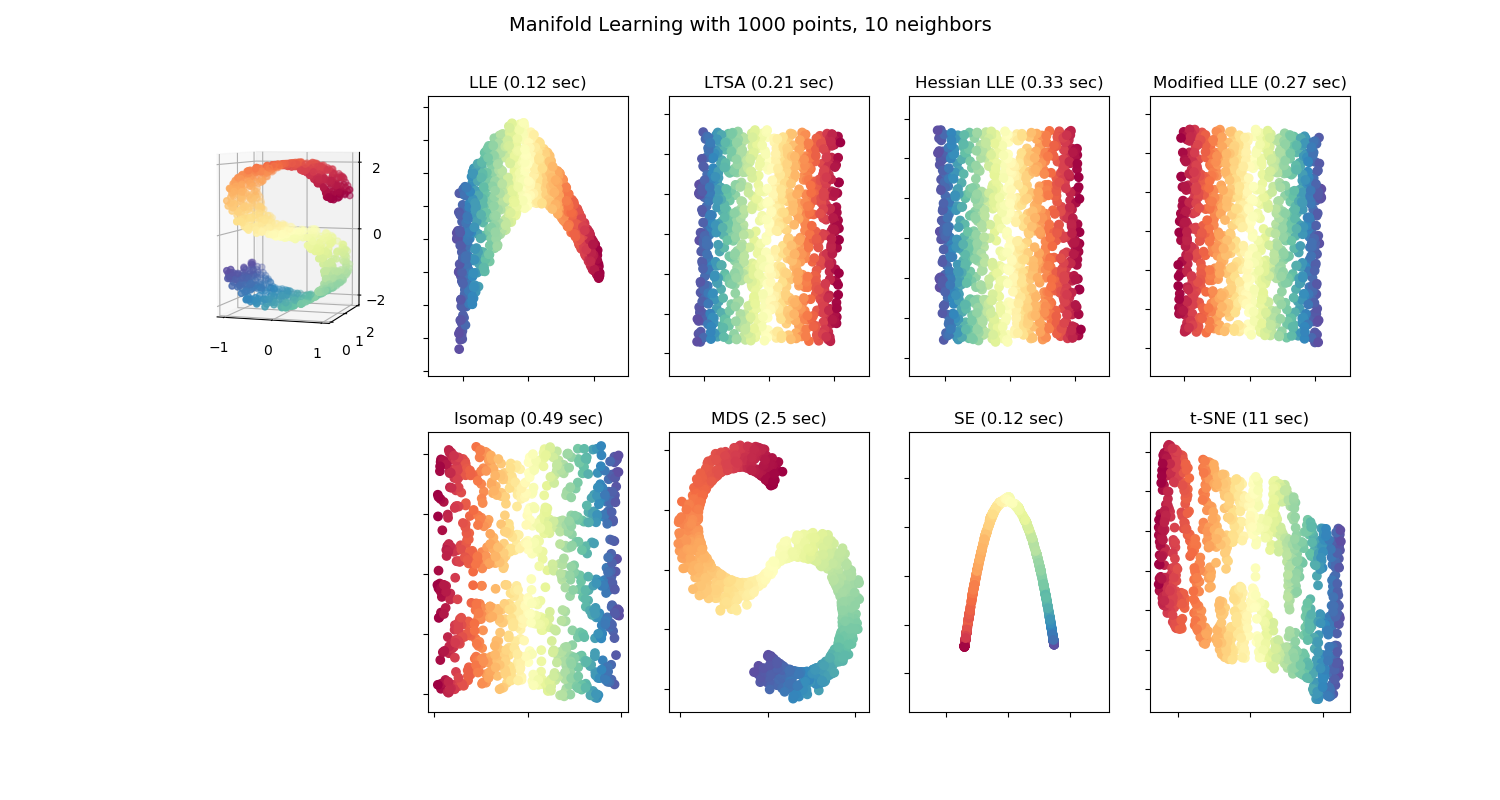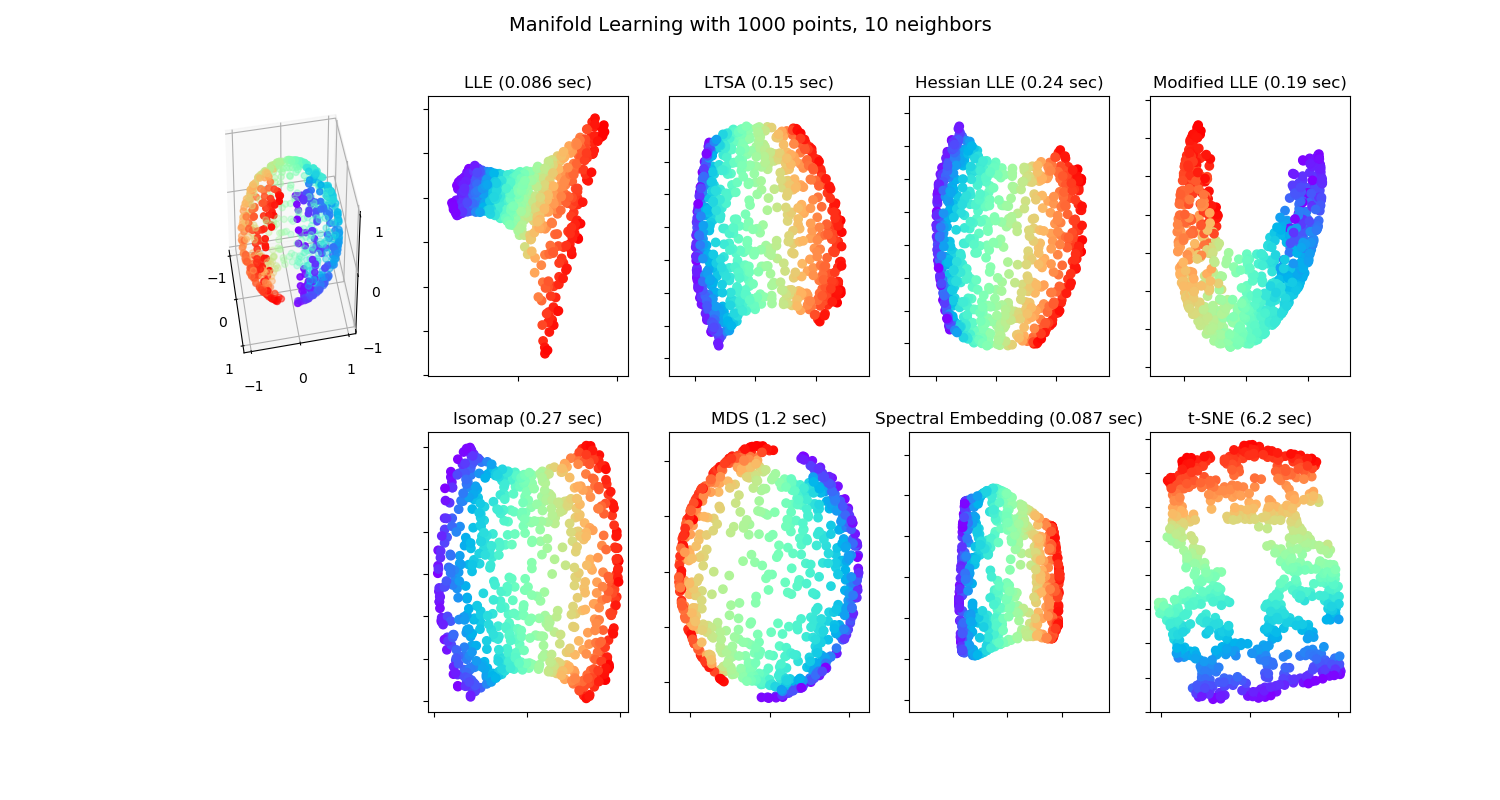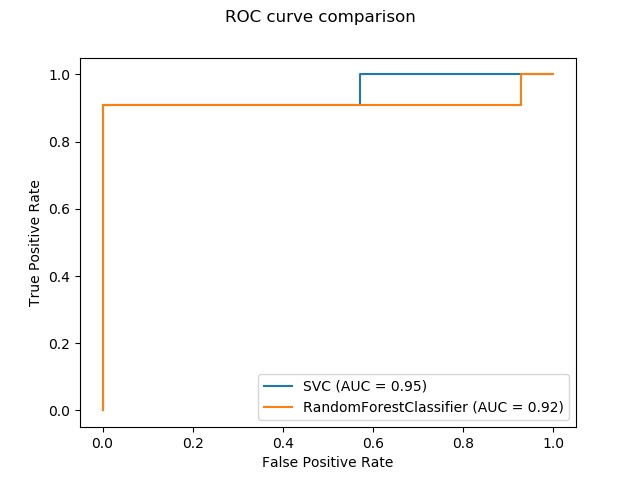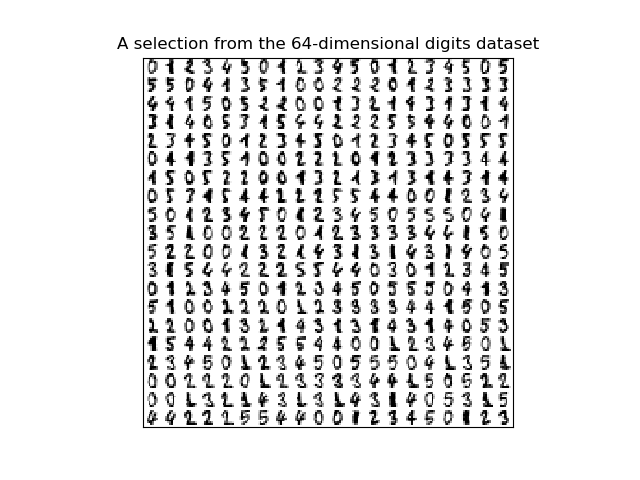sklearn.manifold.Isomap?
class sklearn.manifold.Isomap(*, n_neighbors=5, n_components=2, eigen_solver='auto', tol=0, max_iter=None, path_method='auto', neighbors_algorithm='auto', n_jobs=None, metric='minkowski', p=2, metric_params=None)
[源碼]
等值圖嵌入
通過等距映射的非線性降維
在用戶指南中閱讀更多內容。
| 參數 | 說明 |
|---|---|
| n_neighbors | integer 每個點要考慮的鄰域數。 |
| n_components | integer 流形的坐標數 |
| eigen_solver | ['auto'|'arpack'|'dense'] “auto”:嘗試為給定問題選擇最有效的解決方案。 “arpack”:使用Arnoldi分解來查找特征值和特征向量。 “dense”:使用直接解算器(即LAPACK)進行特征值分解。 |
| tol | float 傳遞給arpack或lobpcg的收斂公差。如果eigen_solver=='dense',則不使用。 |
| max_iter | integer arpack求解器的最大迭代次數。如果eigen_solver =='dense',則不使用。 |
| path_method | string [‘auto’|’FW’|'D'] 在尋找最短路徑時使用的方法。 “auto”:嘗試自動選擇最佳算法。 “FW”:Floyd-Warshall算法。 “D”:Dijkstra的算法。 |
| neighbors_algorithm | string[‘auto’|’brute’|’kd_tree’|’ball_tree’] 用于最近鄰居搜索的算法,傳遞給neighbors.NearestNeighbors實例。 |
| n_jobs | int or None, default=None 要并行運行的作業數。 None除非在joblib.parallel_backend上下文,否則表示1 。 -1表示使用所有處理器。有關更多詳細信息,請參見詞匯表。 |
| metric | string, or callable, default=”minkowski” 計算要素陣列中實例之間的距離時使用的度量。如果metric是字符串或可調用,則它必須是 sklearn.metrics.pairwise_distances的度量參數。如果度量是“預先計算的”,則將X假定為距離矩陣,并且必須為平方。X可能是一個詞匯表。0.22版中的新功能。 |
| p | int, default=2 sklearn.metrics.pairwise.pairwise_distances中的Minkowski指標的參數。當p = 1時,這等效于對p = 2使用manhattan_distance(l1)和euclidean_distance(l2)。對于任意p,使用minkowski_distance(l_p)。 0.22版中的新功能。 |
| metric_params | dict, default=None 度量功能的其他關鍵字參數。 0.22版中的新功能。 |
| 屬性 | 說明 |
|---|---|
| embedding_ | array-like, shape (n_samples, n_components) 存儲嵌入向量。 |
| kernel_pca_ | objectKernelPCA 用于實現嵌入的對象。 |
| nbrs_ | sklearn.neighbors.NearestNeighbors instance 存儲最近的實例,包括BallTree或KDtree(如果適用)。 |
| dist_matrix_ | array-like, shape (n_samples, n_samples) 存儲訓練數據的測地距離矩陣。 |
參考文獻
1 R7f4d308f5054-1 Tenenbaum, J.B.; De Silva, V.; & Langford, J.C. A global geometric framework for nonlinear dimensionality reduction. Science 290 (5500)
實例
>>> from sklearn.datasets import load_digits
>>> from sklearn.manifold import Isomap
>>> X, _ = load_digits(return_X_y=True)
>>> X.shape
(1797, 64)
>>> embedding = Isomap(n_components=2)
>>> X_transformed = embedding.fit_transform(X[:100])
>>> X_transformed.shape
(100, 2)
| 方法 | 說明 |
|---|---|
fit(self, X[, y]) |
計算數據X的嵌入向量 |
fit_transform(self, X[, y]) |
根據X中的數據擬合模型并轉換X。 |
get_params(self[, deep]) |
獲取此估計量的參數。 |
reconstruction_error(self) |
計算嵌入的重建誤差。 |
set_params(self, **params) |
設置此估算量的參數。 |
transform(self, X) |
轉換X。 |
__init__(self, *, n_neighbors=5, n_components=2, eigen_solver='auto', tol=0, max_iter=None, path_method='auto', neighbors_algorithm='auto', n_jobs=None, metric='minkowski', p=2, metric_params=None)
[源碼]
初始化self, 請參閱help(type(self))以獲得準確的說明。
fit(self, X, y=None)
[源碼]
計算數據X的嵌入向量
| 參數 | 說明 |
|---|---|
| X | {array-like, sparse graph, BallTree, KDTree, NearestNeighbors} 以numpy數組,稀疏圖,預計算樹或NearestNeighbors對象形式的形狀為(n_samples,n_features)的樣本數據。 |
| y | Ignored |
| 返回值 | 說明 |
|---|---|
| self | returns an instance of self. |
get_params(self, deep=True)
[源碼]
獲取此估計量的參數。
| 參數 | 說明 |
|---|---|
| deep | bool, default=True 如果為True,則將返回此估算量和作為估算量的所包含子對象的參數。 |
| 返回值 | 說明 |
|---|---|
| params | mapping of string to any 參數名稱映射到其值。 |
reconstruction_error(self)
計算嵌入的重建誤差。
| 返回值 | 說明 |
|---|---|
| reconstruction_error | float |
注
等值線圖嵌入的成本函數為
E = frobenius_norm[K(D) - K(D_fit)] / n_samples
其中D是輸入數據X的距離矩陣,D_fit是輸出嵌入X_fit的距離矩陣,而K是isomap內核:
K(D) = -0.5 * (I - 1/n_samples) * D^2 * (I - 1/n_samples)
set_params(self, **params)
[源碼]
設置此估算量的參數。
該方法適用于簡單估計量以及嵌套對象(例如pipelines)。后者具有形式的參數。<component>__<parameter>以便可以更新嵌套對象的每個組件。
| 參數 | 說明 |
|---|---|
| **params | dict 估算量參數。 |
| 返回值 | 說明 |
|---|---|
| self | object 估算量實例。 |
transform(self, X)
[源碼]
轉換X。
這是通過將點X鏈接到訓練數據的測地距離圖中來實現的。首先在訓練數據中找到X的n_近鄰,然后計算出X上每個點到訓練數據中每個點的最短測地線距離,以構造核。X的嵌入是該核在訓練集的嵌入向量上的投影。
| 參數 | 說明 |
|---|---|
| X | array-like, shape (n_queries, n_features) 如果neighborks_algorithm='precomputed',則假設X是距離矩陣或形狀的稀疏圖(n_queries, n_samples_fit). |
| 返回值 | 說明 |
|---|---|
| X_new | array-like, shape (n_queries, n_components) |




